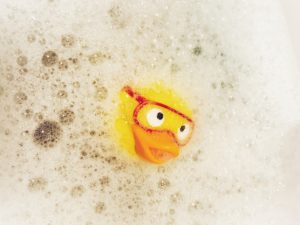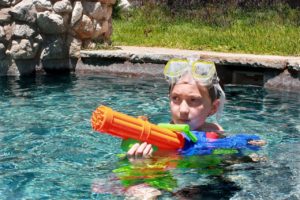Are you looking for the best deodorant for kids? From our in-depth research, here is what we recommend.
It’s quite incredible how time flies with kids. Perhaps it seems like yesterday when you first searched “When do babies take their first steps?” yet today you find yourself Googling, “At what age should a child start wearing deodorant?”
The days are long. The years are short. Sigh.
Puberty—What?!
Before you panic too much about puberty knocking on the door, consider that slight smell of onion lurking from your tween’s bedroom as an opportunity to gently show them how to take ownership of their personal hygiene. There are a number of things to address, and remember it will take some time for them to embrace this part of their life. It is truly a journey and one you are equipped to lead!
Good Old-Fashioned Hygiene
Here are some things to keep in mind when teaching your child about body awareness and changes—first of all, everyone at some point has bacteria in their body that will start to smell, especially as we get closer to our teen years. A few hygiene principles for overall health and wellness include: daily showers with a mild soap, cleaning all parts of our body including the underarm areas while showering, changing socks and underwear every day, and wearing light-weight clothing made of cotton or wicking material—especially after exercise or heat exposure.
Deodorant or Antiperspirant?
Finally, introduce your child to some good deodorant choices. A deodorant will help mitigate the body odor that occurs due to the intersection of sweat and bacteria on the skin. Let them know how to and how often to apply it.
Try a product with the most natural ingredients at first to avoid skin irritations or reactions. If that deodorant doesn’t seem to have enough power against their new odors, you can always try a deodorant with antiperspirant later on.
An antiperspirant will contain aluminum salts to block wetness and sweating, so it is a more chemical-laden product—and isn’t always necessary.
Check out our list of kid’s deodorants to help you get started on this next milestone in your child’s life!
1. Fresh Kidz Natural Deodorant
- ROLL-ON DEODORANT FOR GIRLS THAT DOES WORK: This deodorant range is specially designed for pre-teen and teenage girls. Not only do our Fresh Kidz deodorants provide 24 hour protection by effectively combating body odor, but we do this with safety and health as our top priority. Hip, trendy and cool line of deodorants that does not mark or stain clothing and doesn’t block pores.
- DESIGNED FOR YOUNG AND SENSETIVE SKIN: For a lot of kids, chemicals, when applied to their skin, can give them heavy rashes, hives and lumps. Conventional chemical deodorants, and antiperspirants in particular, can create an intense adverse reaction. Fresh Kidz can help you avoid these uncomfortable side effects and prevent dry, chaffed, and itchy skin. Dermatologically tested and suitable for all skin types.
- PROTECTS AGAINST BODY ODOR: As parents we don’t want our children to have to deal with stigma and teasing that can occur if they have body odor. Fresh Kidz is available for boys and girls in fragrances that are natural, fresh and clean smelling.
- ALL NATURAL WITH NO HARMFUL CHEMICALS: A range of chemical-free personal hygiene products for kids and young teens that parents can trust! Fresh Kidz products are free of harmful chemicals, while still providing effective, all-day, odor protection. Fights bacteria, the main cause of body odor. Deodorant is free of Aluminum, Parabens, Alcohol and Harsh Sulfates. Cruelty-free and vegan.
- PROTECT YOUR WARRANTY: Fresh Kidz products come with a manufacturer’s limited warranty when purchased through an authorized retailer.
This is our pick for overall best deodorant for kids.
Many people wonder if a natural deodorant can work, and this one is proven effective throughout the day! It’s a roll on, making it easy to apply and it does not mark or stain clothing—this is great as some natural kids deodorants have a reputation for being cumbersome to apply (i.e. hold it under your pits for a few seconds to “warm it up” before applying!).
This product also stands out by having packaging and fragrances that appeal distinctly to boys and also to girls. This can be important for a number of teens as they grow more aware of their gender differences.
This roll on deodorant provides 24 hour protection with safety and health as the top priority. Fresh Kidz formulates their products specifically for young and sensitive skin as, for a lot of kids, conventional chemicals in personal hygiene products may cause rashes, hives, and lumps.
Fresh Kidz works to prevent these uncomfortable side effects!
2. TBH Kids Deodorant
- Kids and teens bodies are changing daily, and an effective, safe natural deodorant is a must! From the makers of Fairy Tales hair products, TBH aluminum free deodorant for kids & tweens help neutralize odors & absorb wetness without harsh chemicals, parabens and phthalates. TBH Kids Deodorant is perfect for both boys & girls!
- Our formula contains natural ingredients including charcoal, arrowroot powder, coconut oil, and witch hazel. Together it makes us the perfect deodorant for kids. Overgrowth of bacteria on your skin mixed with sweaty armpit causes the apocrine glands to produce a musky body odor. You dont need to risk your health with harsh chemicals!
- Charcoal absorbs wetness and draws toxins out from underarms while coconut oil neutralizes body odor by getting rid of the odor causing bacteria as well as hydrates the skin. Adding on arrowroot powder that helps absorb moisture without causing irritation.
- Natural deodorants can take up to two weeks to work but are much better option than those containing harsh chemicals. Stay fragrance free, aluminum free, and phthalate free!
- Hold our deodorant stick to skin as it will soften on contact or warm it up using your under arm before applying. Gently apply a small amount underarms & make sure to wash off completely before re-applyi
This is our pick for second best deodorant for kids.
Parents Magazine agrees, and chose this product as their 2021 pick for best kid’s skin care product. It is formulated with natural ingredients including charcoal, arrowroot powder, coconut oil, and witch hazel and it is able to neutralize body odor and absorb wetness while being aluminum free.
Instead, arrowroot powder absorbs moisture while the charcoal draws toxins out from underarms and the coconut oil rids odor-causing bacteria and hydrates skin. Customers rave how well this product works—leaving skin feeling fresh without artificial fragrances or irritants.
The packaging and design appeals to teens as well, and won’t cause embarrassment with overly-marketed labels or gimmicks. By the way…TBH stands for “to be honest”.
3. Tom’s of Maine Wicked Cool! Deodorant for Kids
- WHAT YOULL GET: Contains three 1.6-ounce sticks of Toms of Maine Wicked Cool. Deodorant for Kids in Freestyle Scent
- 24-HOUR PROTECTION: Natural deodorant keeps kids having fun and smelling fresh all day
- DESIGNED FOR KIDS: Aluminum-free deodorant specifically designed for boys and girls
- SMELLS GREAT: Kids deodorant formulated with natural fragrance ingredients
- NATURAL and RESPONSIBLE: This Toms of Maine deodorant is vegan with no artificial fragrances or preservatives and is not tested on anim
This is our choice for best budget deodorant for kids.
I appreciate Tom’s for their long-standing reputation of providing natural choices for families. For awhile, they were one of the only clean choices and while they have lots of competition these days, their products are still as effective and as natural as ever.
Customers stand behind the long lasting, 24-hour protection against body odor and say that it holds up well to excessive sweating too. It has a fragrance derived from natural essential oils and is never tested on animals as Tom’s is committed to being a cruelty free company.
Not every teen is as thrilled about the product’s design, thus this stick may appeal more to younger children.
4. Food Grade Organic Deodorant Stick
- 🌿 100% natural and organic HEALING and DETOX deodorant. STRONG, RELIABLE ODOR & WETNESS PROTECTION FOR KIDS & TEENS! Our deodorants are made of healthy natural ingredients you could EAT. Scientists guarantee that our deodorants do NOT contain any carcinogens and/or toxic substances.
- 🌿 Carcinogen-Free Certified. SAFE FOR EVERYONE including CHILDREN, BABIES, PREGNANT and NURSING MOTHERS. Goes on clear with no residue. Hypoallergenic, PH ballanced, Dermatologist tested as safe. Non-greasy & non-sticky like all stick deodorants.
- 🌿 Does NOT leave marks on clothes and does NOT feel greasy like all natural STICK and JAR deodorants. Contains absolutely NO aluminum or aluminum compounds, alcohol, carcinogens, dyes, preservatives, parabens, beeswax, heavy metals, petroleum, phthalates, GMO, gluten, corn, soy, SLS, Propylene-glycol, Fragrance, Petrolatum, Paraffin, Mineral Oil, artificial colors, silicone oil, menthol, phenol, or Salicylic Acid.
- 🌿 Made in the USA in a solar powered facility. Paleo. Vegan. Gluten-Free. Not tested on animals. We use non-toxic carcinogen-free plant-based ink, environmentally friendly packaging & labe
This is our choice for best organic deodorant for kids.
This organic option is hypoallergenic and dermatologist tested as safe and effective for the most sensitive skin. This deodorant not only protects against body odor and absorbs wetness, but it also has ingredients that promote a natural detox and healing for the skin.
Food Grade Organic says their ingredients are so clean, they are edible! But this product is much more effective and enjoyable as an underarm stick than a snack!
This company goes the extra mile with protecting our earth as well—utilizing solar energy and environmentally-friendly packaging and labels, while being vegan and cruelty free.
Questions and Answers
What age should a child start using deodorant?
Really, this is more about the onset of puberty (ranging from age 9-14 for boys, 8-11 for girls) than a specific age. Let your nose be your guide! And when you or your child do notice the change in body odor, proceed with a ton of empathy and gentleness regarding hygiene and body awareness.
What kind of deodorant should a child use?
Remember to begin with a deodorant rather than antiperspirant, which contains chemicals that block sweat. The products in this article are considered natural deodorants and have a fragrance-free option and are also free of ingredients like aluminum, parabens, triclosan, and artificial fragrances or dyes. This is to be on the safe side with sensitive skin, and to help prevent reactions.










